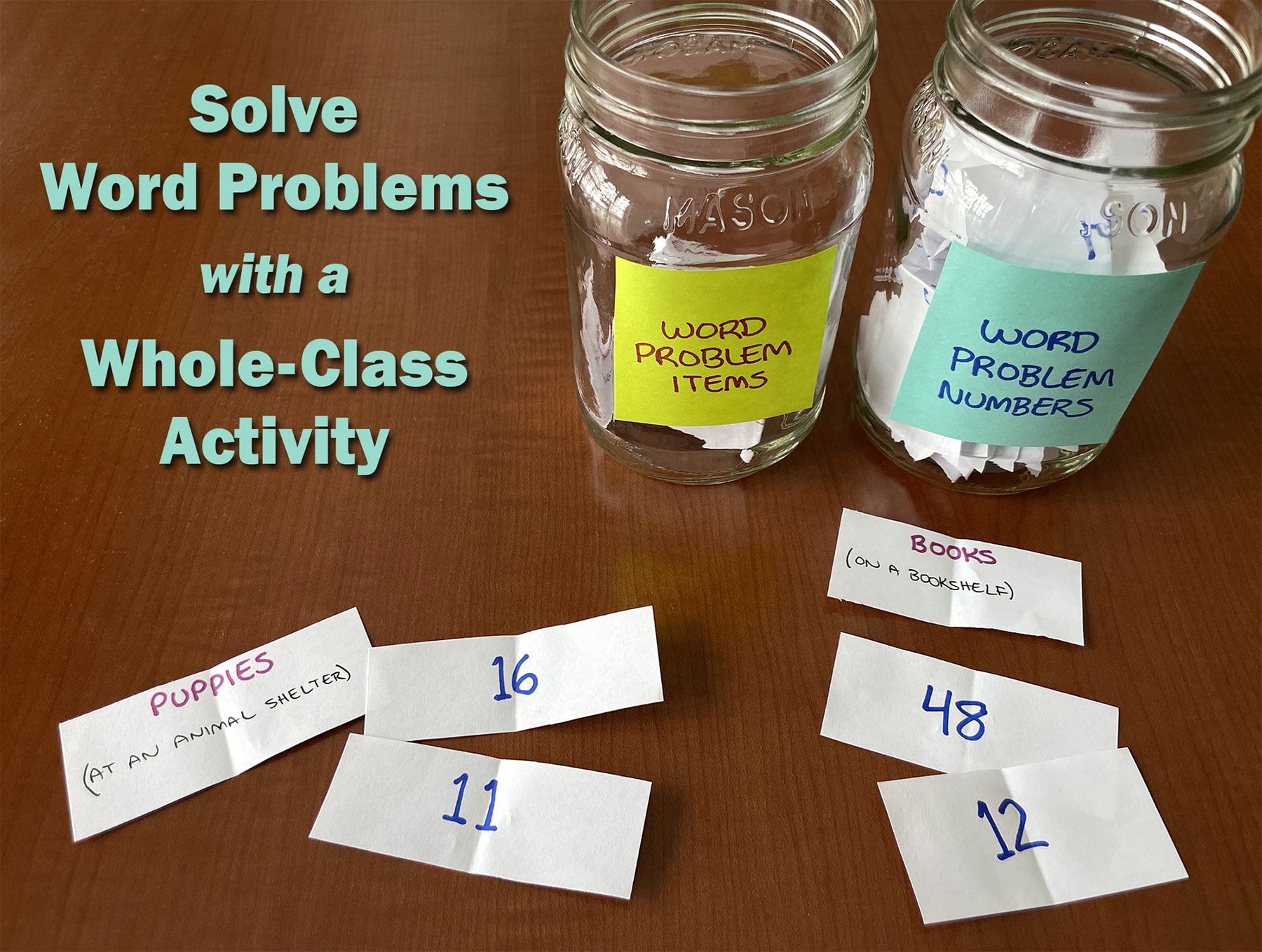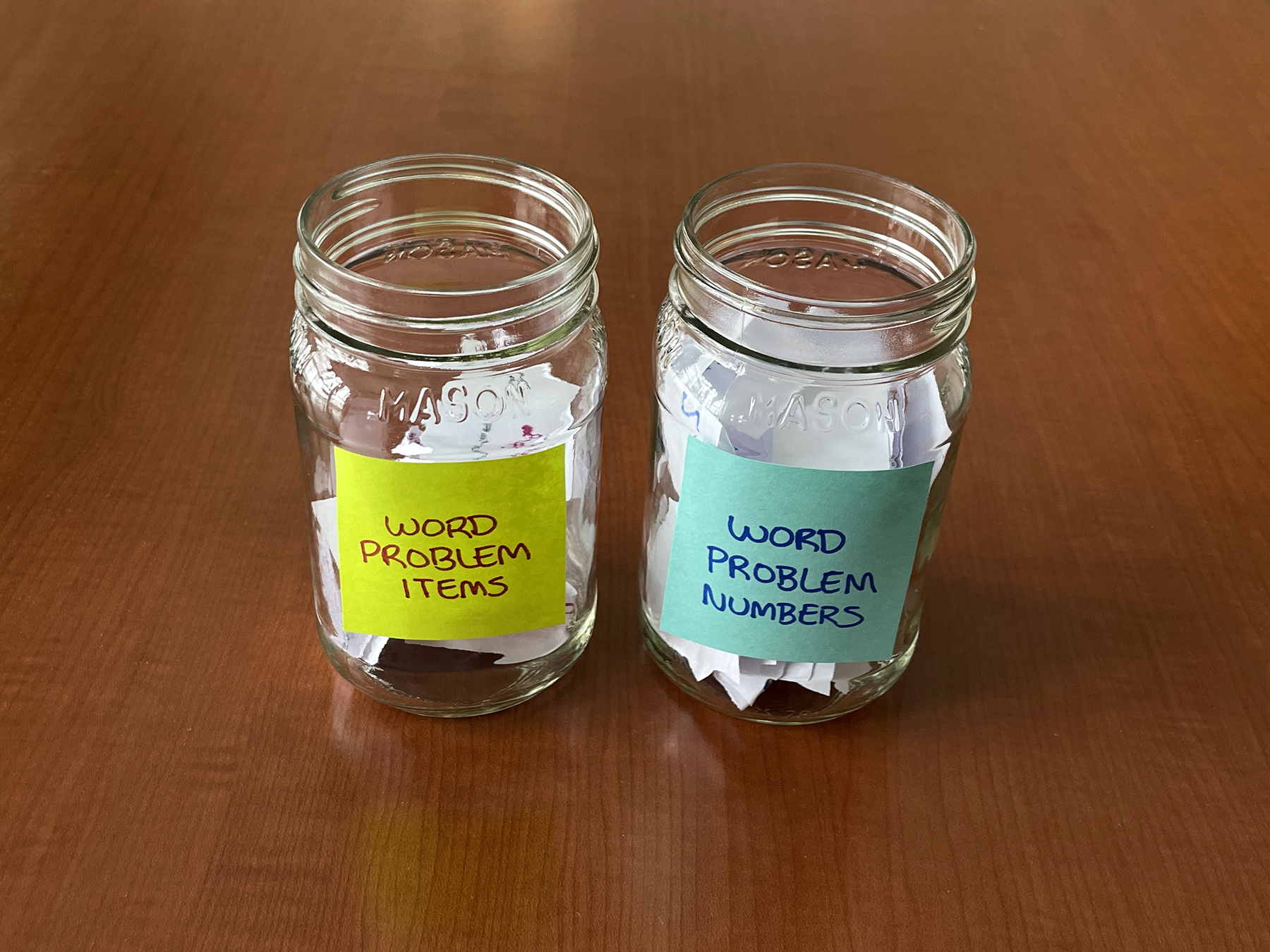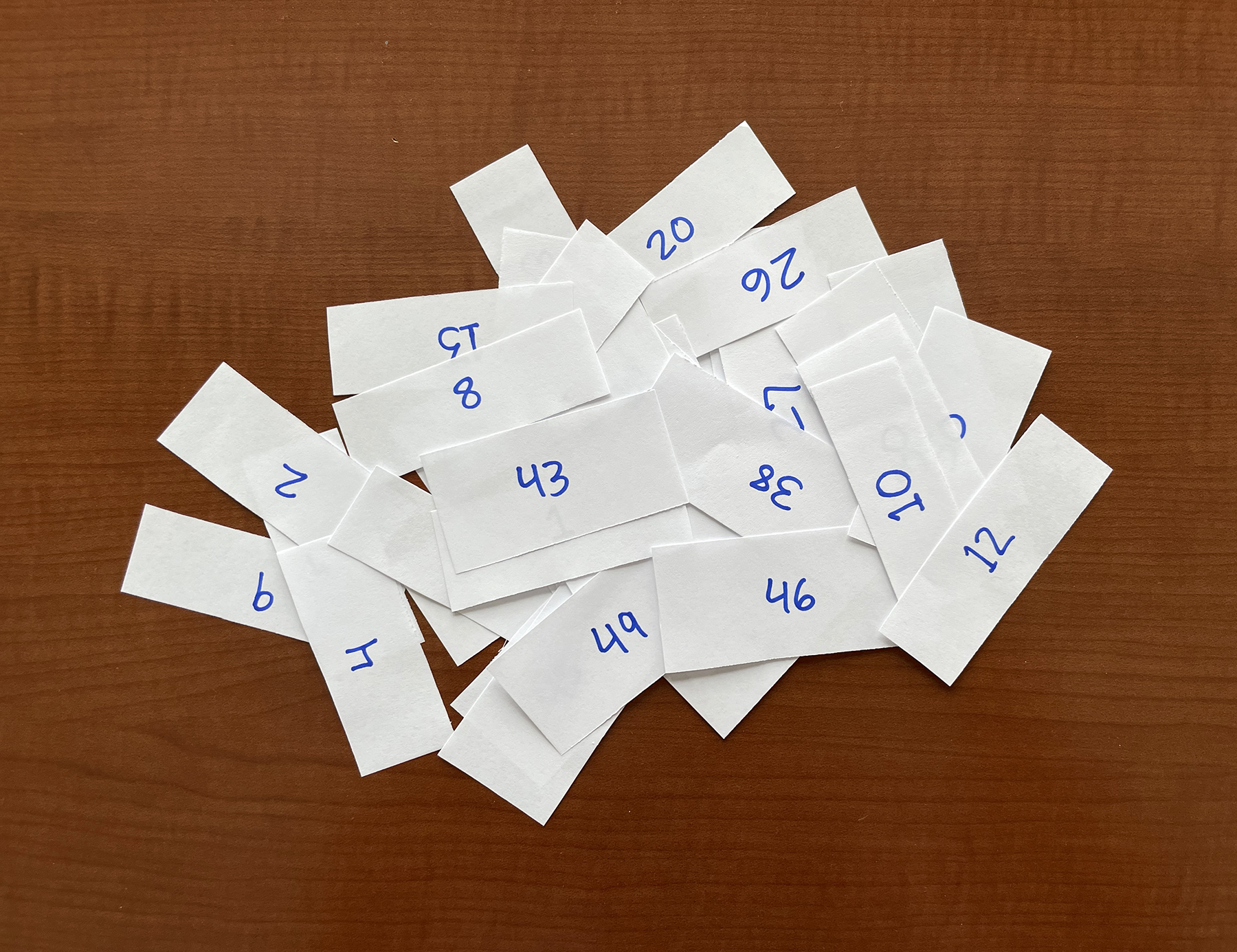
Get ready to practice word problems with your elementary math class! In our February blog post, we're featuring a whole-class activity you can do with your students to practice solving word problems together. This activity's a great way to get your entire class involved in math practice. Read on to find out more.
Looking for a way to build your students' confidence and proficiency with basic word problems? Practice word problems together as a class! You can create word problems to practice a variety of foundational math skills, including the four operations. Use word problems to work on a specific skill, such as addition. Or help students learn to identify which operation they need to use to solve the word problem. Practice solving single-step word problems, multiple-step word problems, or a mix of both. The following activity is ideal for first grade, second grade, third grade, fourth grade, or fifth grade students.

This easy word problem activity is comprised of two parts. First, you and your class will create a word problem together. Then, your students will solve it.
First, decide what kind of word problems your class will practice:
Next, write or print out a variety of objects on little slips of paper. Add the slips of paper to a container, like a shoebox, plastic tub, or small jar that can be passed around the classroom. Here are some ideas:

If you wish, you can include a short descriptive phrase with each item written on the slips of paper to help create context for the word problem students will make:
Then, write or print out a variety of numbers on little slips of paper. Add these slips of paper to a separate container that can be passed around the classroom. You could use consecutive numbers, like the numbers 1 to 50, for example.

Here's how to create word problems as a class:
Give the "Word Problem Items" jar to a student at one end of the classroom and give the "Word Problem Numbers" jar to a student at the opposite end of the classroom. The student with the "Word Problem Items" jar gets to be the subject of the first word problem. He or she will pick an item at random from the jar and read it out loud to the class. The student with the "Word Problem Numbers" jar will pick two numbers at random and read them out loud to the class.

You can write the first student's name, the item name, and the two numbers on your whiteboard for the whole class to view.
For example, Rosie is the student with the "Word Problem Items" jar. Rosie's name will be the subject of the first word problem. Rosie picks an item at random from her jar: "Puppies (at an animal shelter)".
Aaron is the student with the "Word Problem Numbers" jar. He picks two numbers at random from his jar. He reads the numbers out loud to the class: "16" and "11".
Now you and your students have the information you need to create a word problem.
Ask your students for ideas about how to put the information together in a word problem. For example, "What happens to puppies at an animal shelter?" Students can offer suggestions: "They get adopted!" "Families come to meet them and take them home," etc.
Guide your students through the assembly of all the important pieces of information into a word problem: "Rosie and her family went to see the puppies at the animal shelter on Saturday morning. There were 16 puppies available for adoption. When they came back later in the afternoon, there were 11 puppies left. How many puppies were adopted on Saturday?"

Once you create a word problem together as a class, work together to solve it. Ask your students what operation is needed to solve the word problem. Then write the problem on the board. You can invite students at random to come to the whiteboard to solve the problem.
After solving the word problem, the students with the jars will pass them to the student sitting next to, or behind them. Continue to create and solve word problems together until all students have had a chance to pick at least one of the word problem components from a jar. Consider switching up the word problem skills you practice throughout the activity for variety, too.
How do you like to practice word problems with your class? We'd love to hear from you! Share your ideas with our teaching community in the comment section below.
Looking for more fun, engaging word problem activities? Visit iKnowIt.com for lots of interactive word problem games!